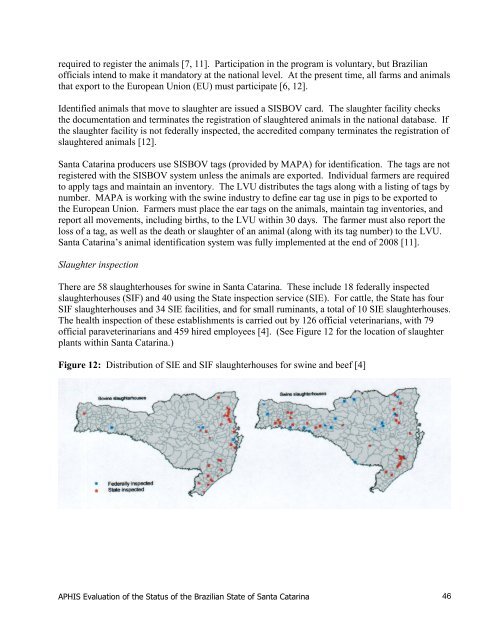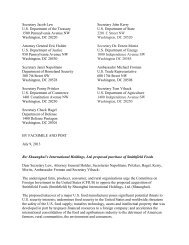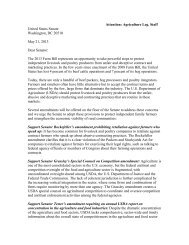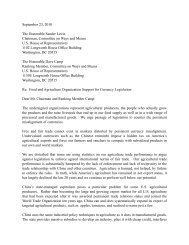Exhibit 8, 100416 Brazil FMD Risk Evaluation - R-Calf
Exhibit 8, 100416 Brazil FMD Risk Evaluation - R-Calf
Exhibit 8, 100416 Brazil FMD Risk Evaluation - R-Calf
Create successful ePaper yourself
Turn your PDF publications into a flip-book with our unique Google optimized e-Paper software.
equired to register the animals [7, 11]. Participation in the program is voluntary, but <strong>Brazil</strong>ian<br />
officials intend to make it mandatory at the national level. At the present time, all farms and animals<br />
that export to the European Union (EU) must participate [6, 12].<br />
Identified animals that move to slaughter are issued a SISBOV card. The slaughter facility checks<br />
the documentation and terminates the registration of slaughtered animals in the national database. If<br />
the slaughter facility is not federally inspected, the accredited company terminates the registration of<br />
slaughtered animals [12].<br />
Santa Catarina producers use SISBOV tags (provided by MAPA) for identification. The tags are not<br />
registered with the SISBOV system unless the animals are exported. Individual farmers are required<br />
to apply tags and maintain an inventory. The LVU distributes the tags along with a listing of tags by<br />
number. MAPA is working with the swine industry to define ear tag use in pigs to be exported to<br />
the European Union. Farmers must place the ear tags on the animals, maintain tag inventories, and<br />
report all movements, including births, to the LVU within 30 days. The farmer must also report the<br />
loss of a tag, as well as the death or slaughter of an animal (along with its tag number) to the LVU.<br />
Santa Catarina’s animal identification system was fully implemented at the end of 2008 [11].<br />
Slaughter inspection<br />
There are 58 slaughterhouses for swine in Santa Catarina. These include 18 federally inspected<br />
slaughterhouses (SIF) and 40 using the State inspection service (SIE). For cattle, the State has four<br />
SIF slaughterhouses and 34 SIE facilities, and for small ruminants, a total of 10 SIE slaughterhouses.<br />
The health inspection of these establishments is carried out by 126 official veterinarians, with 79<br />
official paraveterinarians and 459 hired employees [4]. (See Figure 12 for the location of slaughter<br />
plants within Santa Catarina.)<br />
Figure 12: Distribution of SIE and SIF slaughterhouses for swine and beef [4]<br />
APHIS <strong>Evaluation</strong> of the Status of the <strong>Brazil</strong>ian State of Santa Catarina 46











